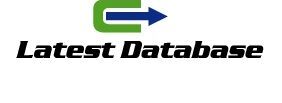First-party data—collected directly through your website, app, or in-store POS system—is always more accurate than third-party sources. Why? Because the user enters the number themselves, often confirming it through a verification code (SMS or call). On the other hand, purchased or scraped lists are notoriously unreliable. They may include inactive, recycled, or even fake numbers. And if your platform repeatedly attempts to contact these numbers, it could be flagged by carriers or spam filters, jeopardizing your sender reputation.
To truly ensure accuracy in 2025, businesses must go beyond
validation and focus on ongoing data hygiene and compliance checks. This means regularly cleaning your lists to remove outdated or unreachable numbers, using double opt-in methods to prevent typos or fraudulent entries, and continuously syncing with CRM and engagement tools to track behavior and opt-out activity. You should also armenia phone number list pay close attention to international compliance, especially if your audience spans multiple countries. For example, a phone number format that’s valid in the U.S. might not work for E.U. or Asian
markets due to prefix and country code differences. Using formatting tools and global validation services ensures you maintain consistency across systems. Another overlooked aspect of accuracy is data freshness. Even a valid phone number
might not be useful if the customer changed it months ago and you failed to update your records. This is why re-verification protocols—asking users
to confirm their numbers periodically—are becoming a standard part of responsible data management. In the end, your phone number what is the purpose of account-based marketing data is only as good as the source and the system that maintains it. If you rely on outdated, low-quality, or non-compliant sources, you risk more than just marketing failure—you risk losing customer trust and running afoul of evolving digital privacy laws.
Spam calls are one of the most frustrating consequences of poorly
managed phone number data—for dating data both businesses and consumers. In 2025, with spam call volume exceeding billions globally per month, users
are more wary than ever of sharing their personal numbers. For businesses, this presents a double-edged sword: on one hand, the value of having a clean, compliant list of phone numbers is extremely high for SMS marketing, support, and engagement; on the other, if you’re sending messages to numbers that are flagged, recycled, or obtained unethically, you’re contributing to the very ecosystem that users are trying to avoid.
Cleaning your phone number data is no longer a backend, occasional task. It is now an essential, front-line defense against spam-related
damage—both in terms of consumer trust
and regulatory compliance. When numbers are outdated, inaccurate, or never opted in, they’re more likely to be flagged as spam by carriers or reported by users. This not only diminishes your deliverability rates, but could also result in your brand being blacklisted or fined under privacy laws like TCPA, GDPR, or CCPA.
So how do you stop spam at the source? The answer starts
with a thorough phone number data
hygiene process that includes validation, verification, formatting, and consent tracking. First, you need to validate every number in your
database using real-time tools like Twilio Lookup, NumVerify, Telesign, or Google’s libphonenumber. These tools confirm
whether a number is real, active, correctly formatted, and associated with a known carrier. This step alone helps you eliminate fake, mistyped, or inactive
numbers. Second, use line-type detection to differentiate between mobile, landline, VoIP, or toll-free numbers. If your use case involves SMS campaigns, targeting landlines or VoIP numbers won’t work—and may appear spammy if messages don’t go through properly.






